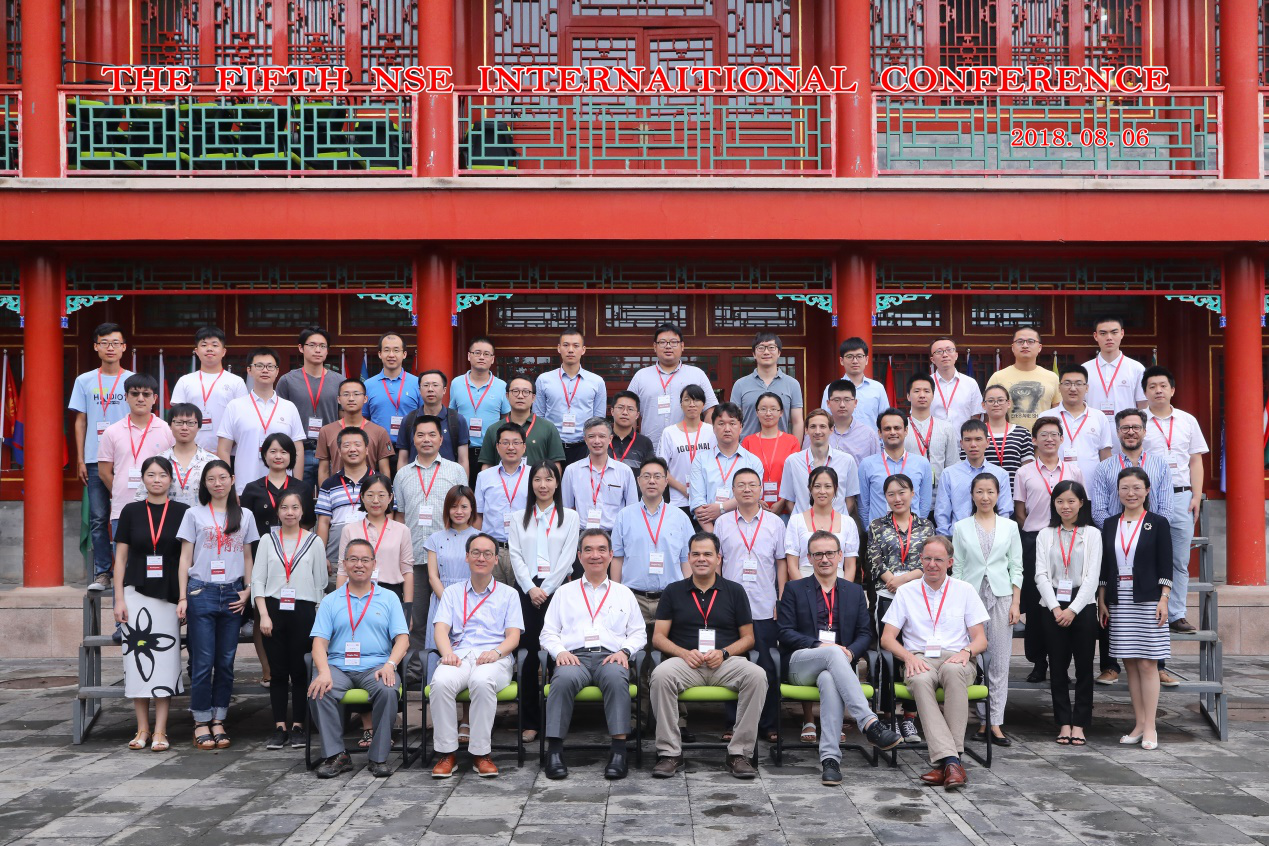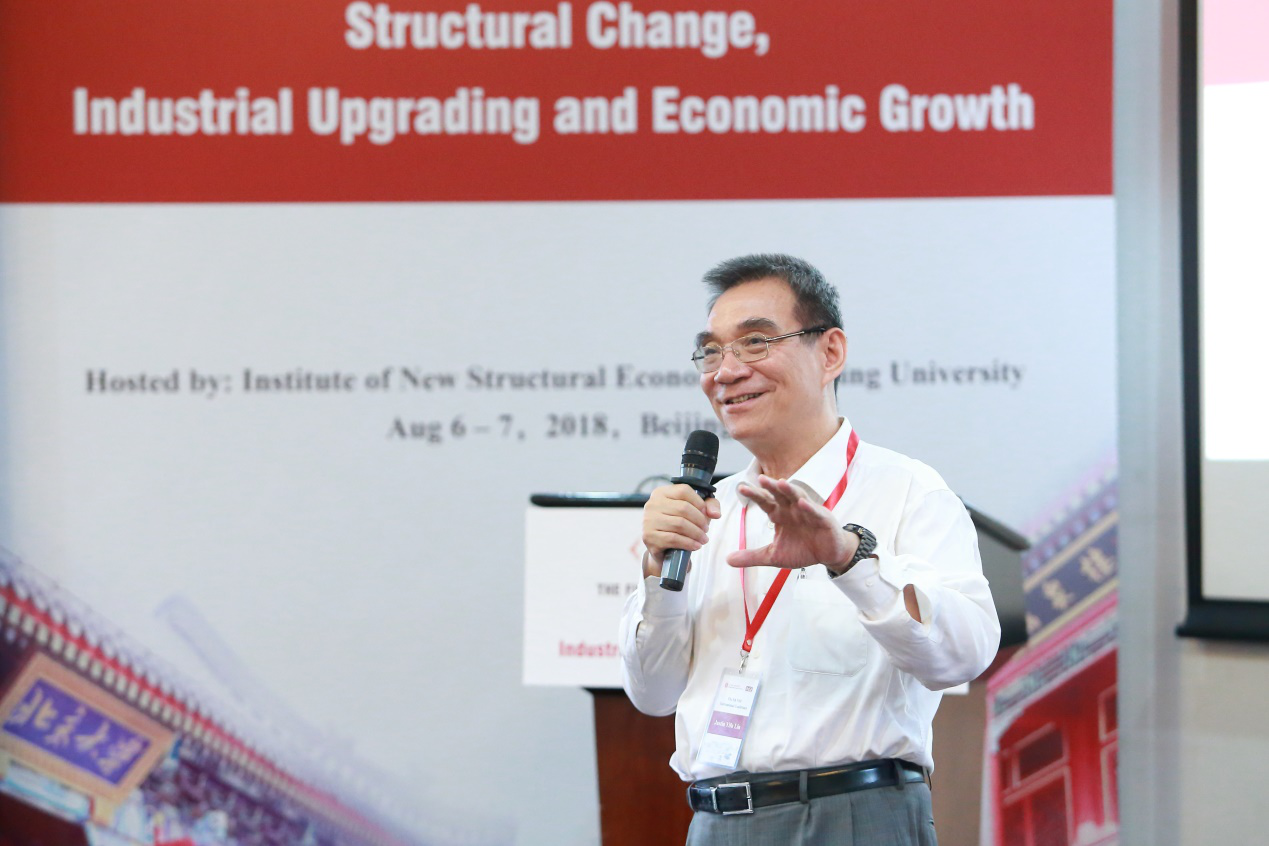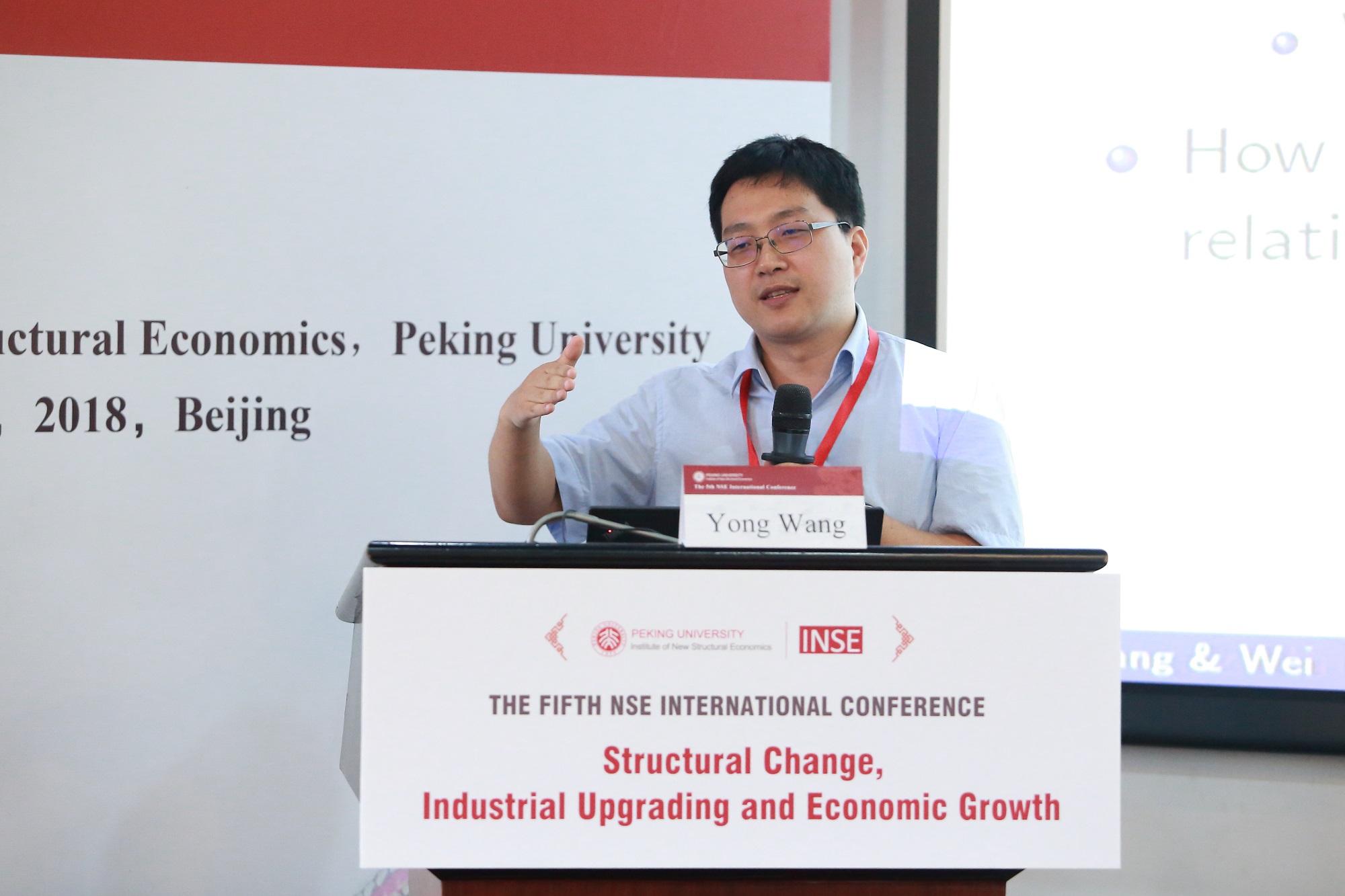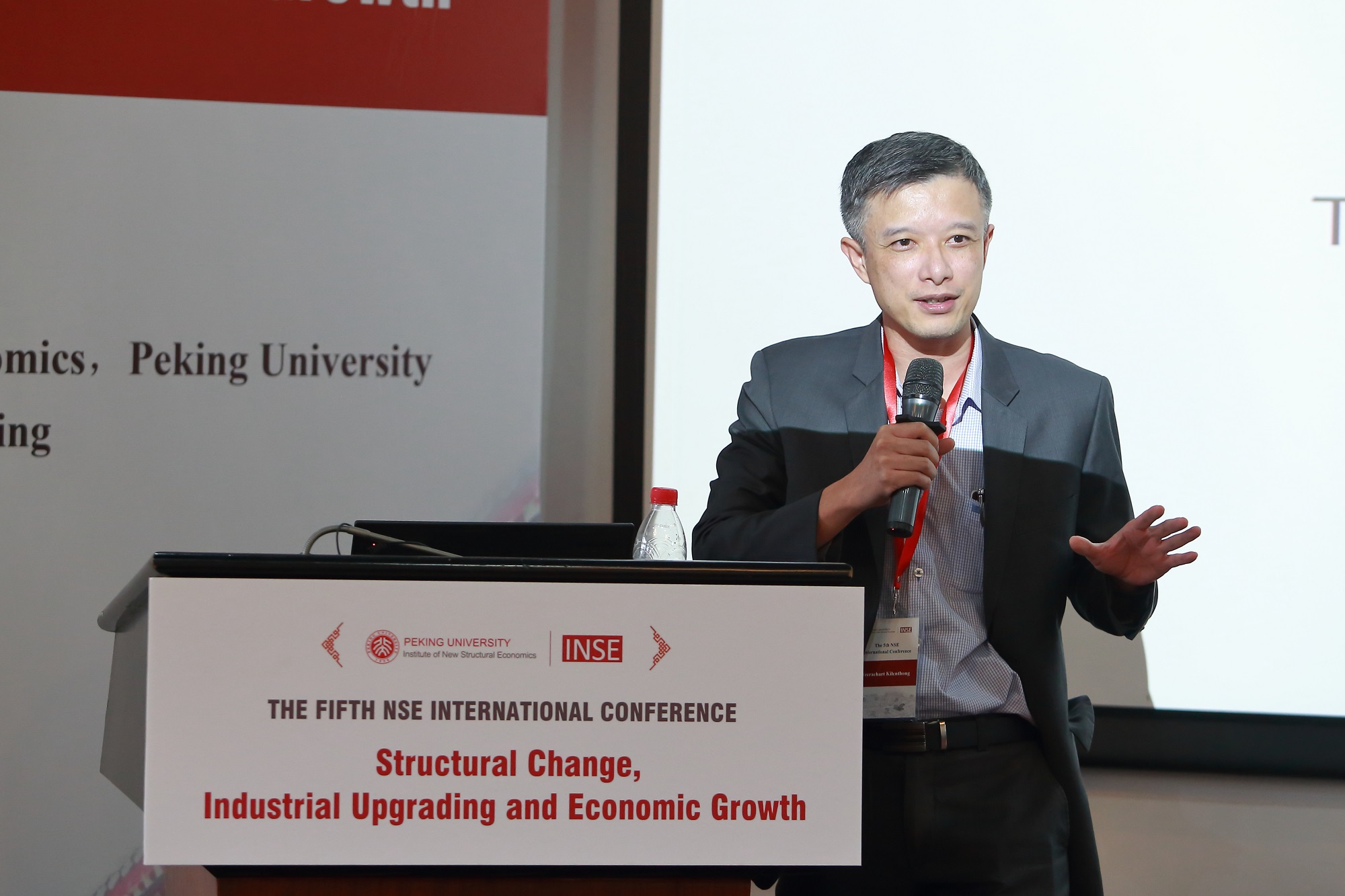Research﹀
The 5th NSE International Conference Closed with Success
2018-08-10
Content introduction:
The 5th New Structural Economics International Conference Closes with Success
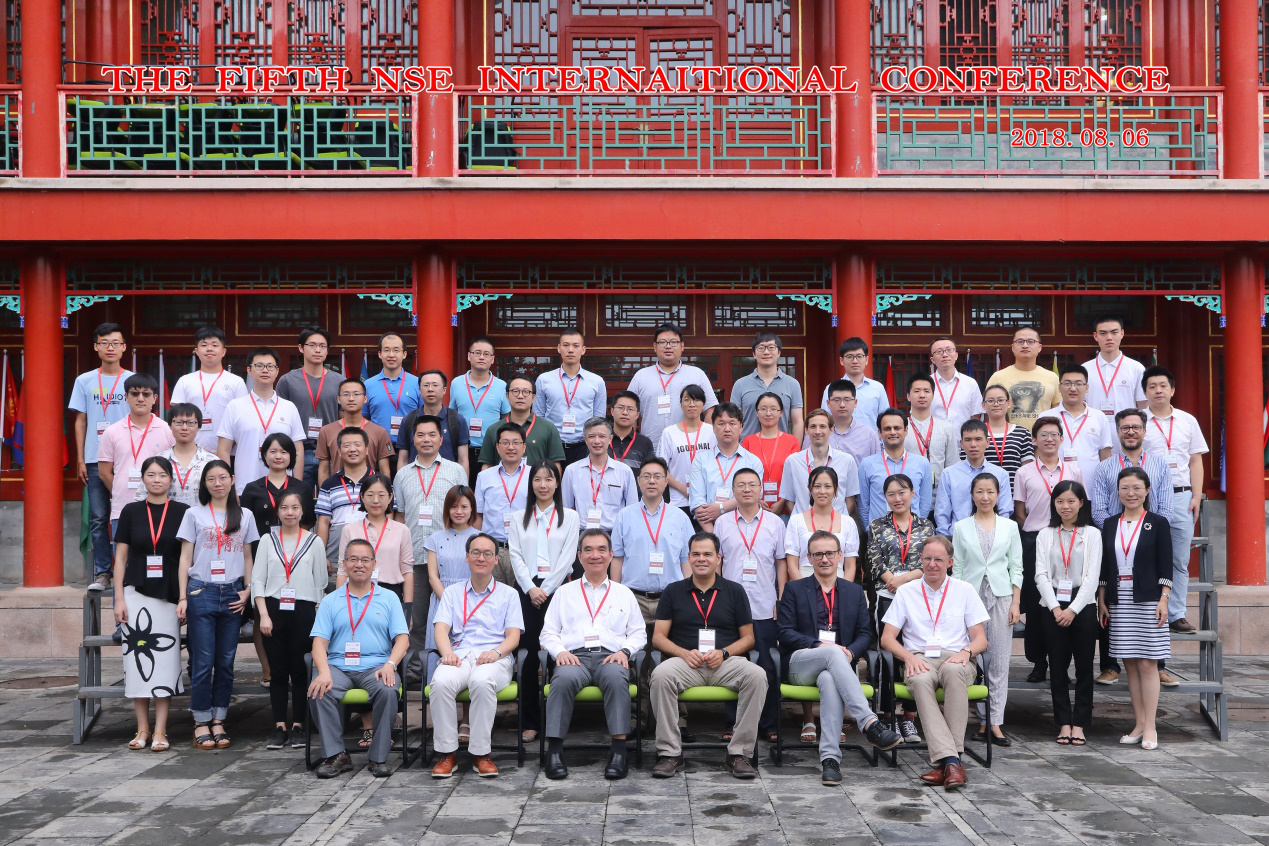
The fifth New Structural Economics International Conference was held during August 6-7 at Peking University. The theme of this conference was Structural Change, Industrial Upgrading and Economic Growth. The welcome speech was delivered by Professor Justin Yifu Lin at the opening ceremony, then Professor Yongseok. Shin, Professor Akos Valentinyi, Professor Alexander Monge-Naranjo, Professor Jianjun Miao, Professor Keyu Jin, and Professor Yong Wang gave keynote speeches during the conference. More than 10 scholars from famous universities and research institutes both at home and abroad gave talks on academic papers. Erzo G.J.Luttmer, Xinqiao Ping, Shenghao Zhu, Yuzhe Zhang and other well-known scholars were also specially invited to participate this New Structural Economics International Conference.

Professor Yong Wang, the chair of the conference, Academic Deputy Dean of the institute of New Structural Economics at Peking University, made a brief introduction of the conference.
Welcome Speech
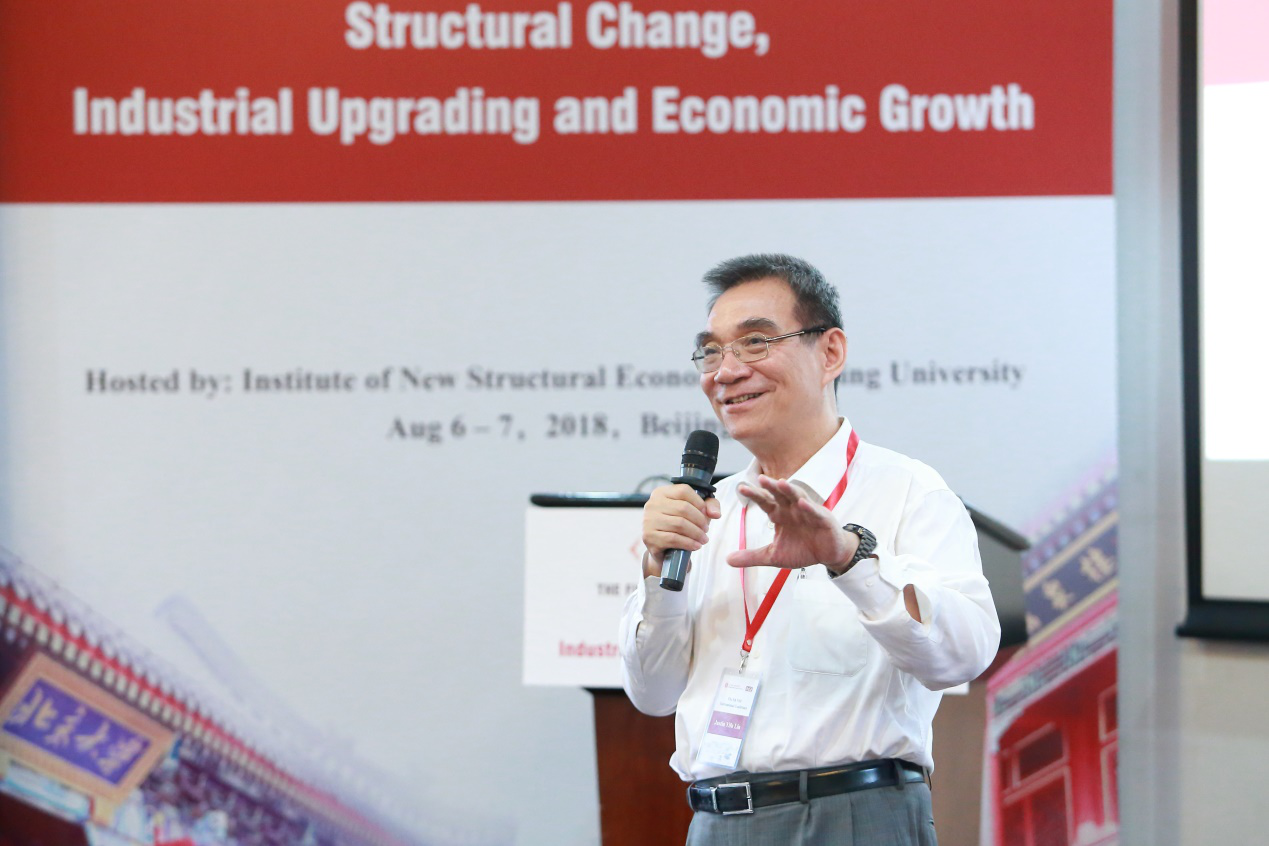
Professor Justin Yifu Lin, Dean of the Institute of New Structural Economics and Honorary Dean of the National School of Development, delivered a welcome speech. Professor Lin pointed out that New Structural Economics uses neoclassical approach to study the dynamic structural change and industrial upgrading in the process of economic development. New Structural Economics aims to incorporate structure into mainstream economic analysis, which is mainly based on one-sector model or uses structure in developed countries, and does not take into account the structural differences on different levels of development. The differences between developing and developed countries are not only quantitative, but also qualitative. New Structural Economics proposes that the structural differences and distortions are endogenous to an economy’s level of development.
Professor Lin emphasized that a good theory is one that can help people not only better understand the world but also change it. He welcomed guests and scholars here to participate in the conference and cooperate with colleagues in the Institute of New Structural Economics, making contribution to this promising research field.
In the next two days, more than a dozen famous experts and young scholars from all over the world will give keynote speeches, present research papers, and conduct intensive academic discussions on structural change and economic growth.
15 Scholars were invited to share their latest researches in the conference, and the Lecture Brief will be post in 4 days. Here is the Brief delivered in the morning of 6, August.
Lecture Brief I
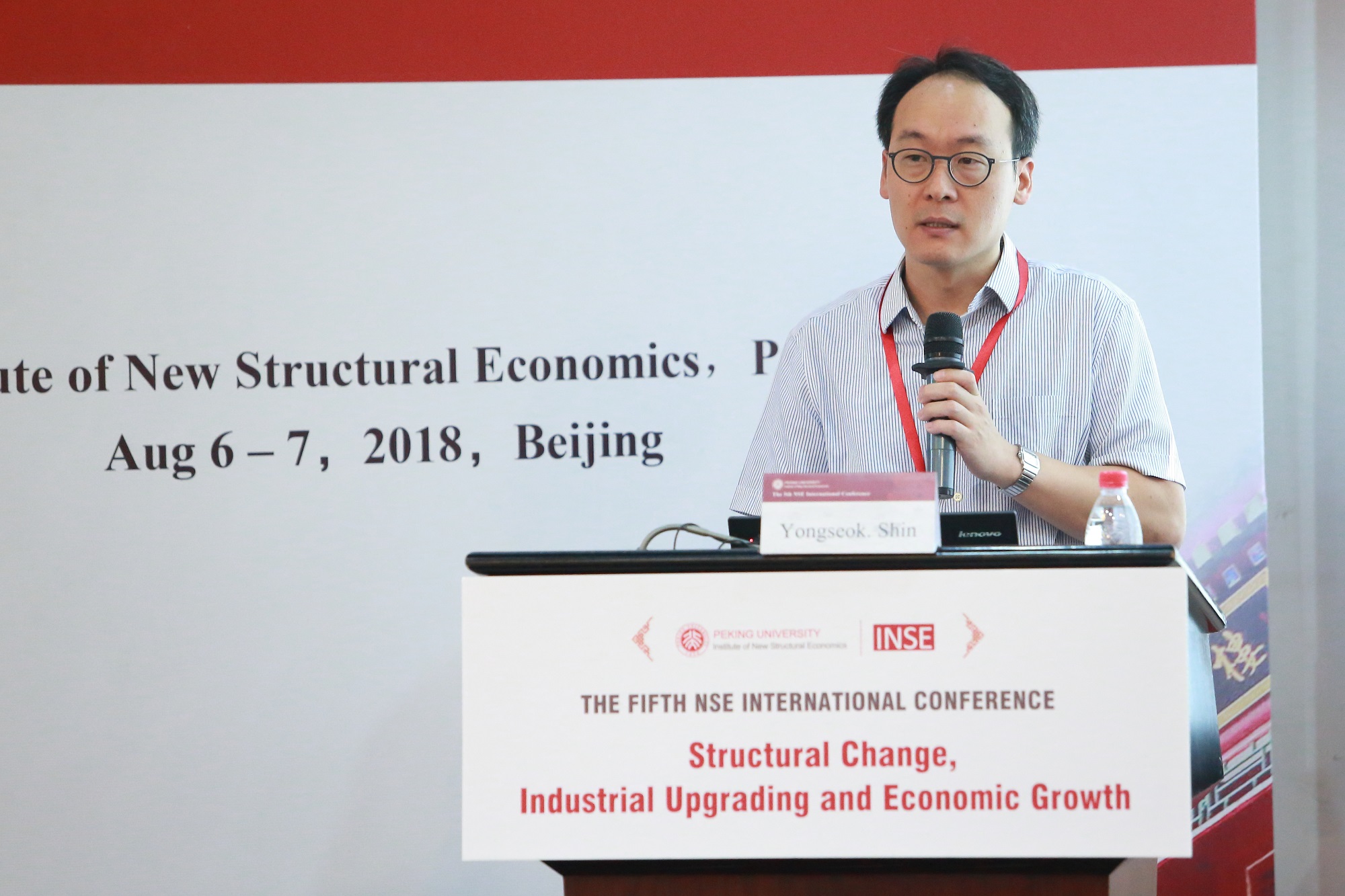
Yongseok Shin: Macro Models with Occupational and Industrial Structure
In the first keynote session on the morning of August 6, Professor Yongseok Shin from Washington University in St. Louis delivered a speech entitled "Macro Models with Occupational and Industrial Structure". His speech is based on two papers he recently completed with his co-authors:
The first paper focuses on the impact of task-specific technological change on the horizontal and vertical polarization in occupational structure. The paper proposes a novel framework that integrates the distribution of individual skills with the occupational and industrial structure of the whole economy. Individuals are heterogeneous on two dimensions, managerial skills and worker human capital. They become managers or workers based on their own skills, and workers then select into different tasks. Managers organize workers to produce sector-specific goods. Sectors differ in how intensively different tasks are used in production. Based on this model, the authors found that technological advances in middle-skill tasks lead to higher employment shares and wages (horizontal polarization) for relatively low- and high-skill occupations, and higher employment share and wage for managers relative to workers (vertical polarization). The authors also analyzed the heterogeneous effects on occupational structure polarization and total factor productivity growth among different sectors.
In the second part of the lecture, the author, based on another research paper, attempts to explain the recent decline in total factor productivity in the United States from the perspective of occupational and industrial structure. Based on the first part model, the author introduced more disaggregated industries, and also added computer as a separate capital, which serves as an input for all industries. The authors found that occupations that are experiencing faster-than-average productivity growth tend to shrink in value-added and employment as a result of the complementarity among occupations as well as industries in the production process, the typical ‘Baumol’s disease’, thereby reducing their contribution to aggregate productivity growth. This can explain most of the decline in aggregate productivity. The rapid productivity growth in the computer industry and the accompanying decline in prices raised the demand for computers, so its contribution to average productivity growth was apparent until the growth in computer industry slowed down after 2000. In fact, the decline in aggregate productivity in the United States began in the 1970s. But the rapid development of the computer industry in the 1980s and 1990s offset some of the downward trend, which became more apparent after 2000.
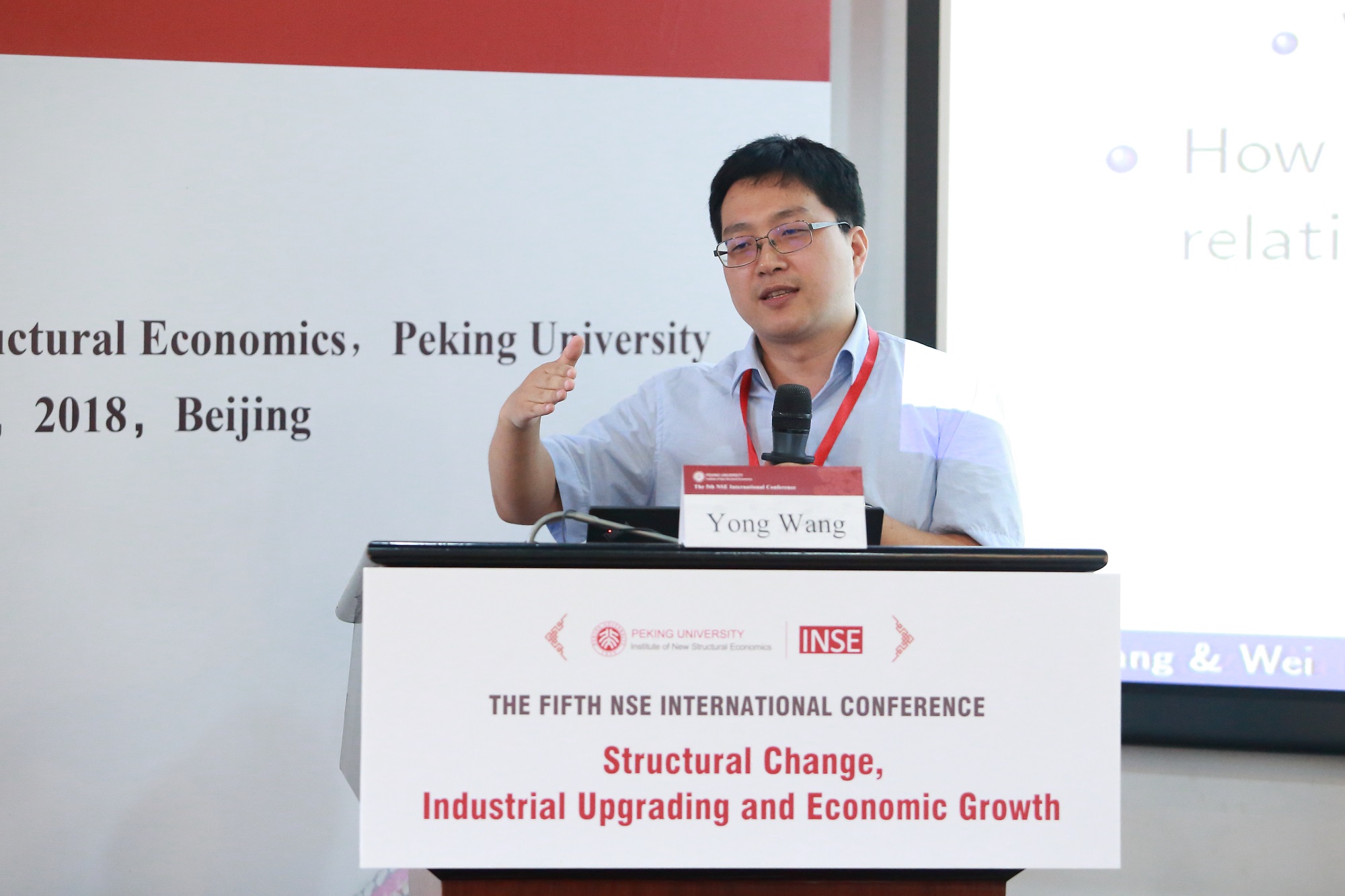
Yong Wang: Trade and Non-convergence of Middle-Income Countries
In a special speech on the morning of August 6, Professor Yong Wang, the academic deputy dean of the Institute of New Structural Economics, presented his research " Trade and Non-Convergence of Middle-Income Countries", co-authored with Professor Shang-Jin Wei from Columbia University.
Professor Wang first emphasized the importance of the concept “middle income trap” by presenting growth data at the national level. He pointed out that only a small percentage of the middle-income countries in the world have successfully entered the ranks of developed countries. Many studies have devoted a lot to poverty traps in low-income countries and economic growth in developed countries, but not enough to growth issues in middle-income countries which are equally important.
In his research, Professor Wang built a “sandwich model” in international trade: there are three countries, S, M and N, representing low-income economies (South), middle-income countries and high-income countries (North), respectively. Under the framework of the horizontal innovation model, three countries have low, medium and high technical levels, respectively, which are characterized by different types of goods that can be produced and labor productivity. The three countries specialize based on comparative advantages, and the developed country (N) can carry out product innovation and expand the number of product types.
In equilibrium, the middle-income country (M) face two negative effects from: the chasing effect of the low-income country (S) and the pressing effect of the high-income country (N). Unless the low-income country (S) is too poor, the growth in labor productivity in Country S (intensive margin) and the increase in the types of production products (extensive margin) will enlarge the income gap between M and N. At the same time, the product innovation of Country N not only enlarges the income gap between M and N, but also makes the negative effect of S's chasing effect on Country M more severe.
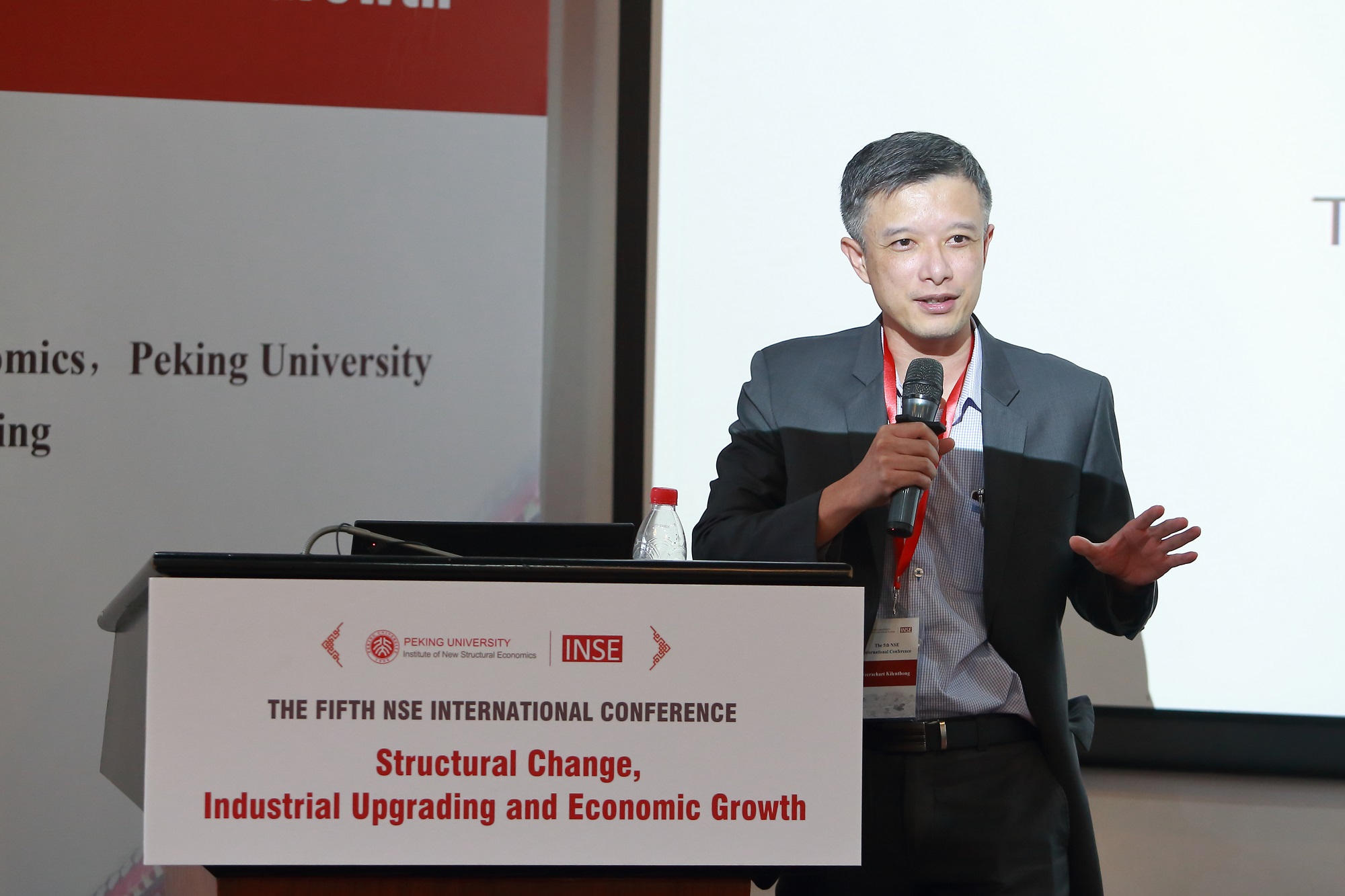
Weerachart T. Kilenthong: An Early Evaluation of an Early Childhood Curriculum Intervention in Rural Thailand
Professor Weerachart T. Kilenthong’s lecture evaluates an early impact of an early childhood curriculum intervention on child development in rural Thailand. The study finds that the new curriculum significantly improved child development in multiple dimensions, including gross motor, fine motor, language skill, and personal and social skills, and the results are robust. The main contribution of his study is that the approach of using the randomization of additional teachers as an instrument to overcome the endogeneity problem, potentially caused by an endogenous decision of teachers to adopt the new curriculum.
In the first part of the lecture, Professor Weerachart T. Kilenthong starts by giving a brief introduction of the RIECE curriclum. The RIECE curriculum is developed and promoted by the RIECE Thailand project. The important feature of the RIECE Thailand project is the exogenously randomization of the additional RIECE Teachers. RIECE Thailand randomly assigned 19 RIECE teachers to randomly chosen 19 centers. This is the randomization part of the project, which is used as the instrumental variable in this study.
The second part of the lecture is mainly about the description of the RIECE data and the key variables. The advantage of the RIECE data is that it has both detailed household and school information in the same data set. The key variables in this study include: the RIECE Curriculum dummy variable, the intensity of teachers’ adoption (defined by the number of days per week that the teacher applied the new curriculum), teaching quality (evaluated by a team of early childhood educators who regularly visited each center) and the measurement of the child development (divided into five main skill sets according to the Developmental Surveillance and Promotion Manual Test: gross motor skill, fine motor skill, receptive language skill, expressive language skill and personal & social skill).
The empirical strategy is illustrated in the third part. The endogeneity problem of unobserved teacher characteristics is solved by using Heckman’s endogenous dummy variable estimation with the randomization of additional teachers as an instrument variable.
Finally, Professor Weerachart T. Kilenthong gives the conclusion and the extension of the study. Potential extensions of this study includes consideration of behavioral problem index, different measurements of teaching quality, etc.
Author: Haochen Zhang、Yangtian Jiang、Jinmei Feng
Proofread by: Lijun Zhu
For more information, please follow us on Wechat where related news about the 5th NSE International Annual Conferen will be released in the following days.


